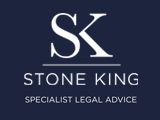As Jeremy Hunt took to the despatch box just 34 days after taking on the role of Chancellor of the Exchequer, all eyes were on him. In light of an ever-burgeoning cost of living crisis, the Chancellor promised that the Autumn Statement would ensure his tax and spending plans would “stand the test of time”. Pearson May partner Jacqui Bowden outlines some of the key points from the statement and what they mean for you and your business.
Personal changes

Basic-rate Income Tax remains at 20% ‘indefinitely’. While Rishi Sunak originally announced the rate would drop to 19% from April 2024 during his previous role as Chancellor, the proposed reduction has been dropped.
National Insurance increase has been scrapped. The National Insurance rise of 1.25%, which took effect in April this year, was reversed as part of the mini-Budget. Jeremy Hunt retained that measure, along with the cancellation of the April 2023 health and social care levy.
Dividend Allowance. The Chancellor announced that the dividend tax allowance will be slashed from the current £2,000 to £1,000 for the year ending 5 April 2024 and then again to £500 for the year ending 5 April 2025. Investors who receive dividends in excess of £1,000 are likely to have more tax to pay from 6 April 2023.
Additional rate of Income Tax. One of the biggest announcements made by the Chancellor was the lowering of the additional-rate tax threshold from £150,000 a year to £125,140 – to coincide with the income level at which the personal allowance is completely lost – as of 6 April 2023.
Income Tax thresholds. The personal allowance threshold will remain frozen at £12,570 until 2028, along with the higher-rate threshold and the National Insurance contributions thresholds. Some are referring to this as a ‘stealth tax’ – where wage increases over time will cause people to find themselves caught in higher tax bands, potentially negating pay rises. If the personal allowance had increased in line with the Consumer Prices Index it would have been £14,250 by April 2023.
Capital Gains Tax. A cut to the Capital Gains annual exemption, over the next two years, was also announced. The annual exemption of £12,300 will be cut to £6,000 for the tax year 2023/24 and will then be halved again to £3,000 in 2024/25, meaning up to £9,000 p.a. of additional taxable gains for those who currently make full use of their exemption.
Inheritance Tax. The Inheritance Tax nil-rate band is currently set at £325,000 and will remain at this rate until April 2028. This hasn’t increased since 2009. If it had been indexed, it would now be almost £470,000. Another example of ‘stealth tax’. The residence nil-rate band remains at £175,000 but will continue to taper away by £1 for every £2 that an estate exceeds £2m in value.
Business changes
Corporation Tax rises to 25% from 1 April 2023. This increase will go ahead, despite previous plans to scrap it. The full 25% rate will apply to profits of £250,000 and over, while companies with profits up to £50,000 will continue to pay at 19%. Profits between these two figures will be subject to a tapered rate.
R&D relief. Changes to the rates of the two research & development (R&D) relief schemes were announced. The additional deduction for SME R&D relief will decrease from 130% to 86% and the SME credit rate will decrease from 14.5% to 10%. Meanwhile, the research and development expenditure credit rate will increase from 13% to 20%.
Annual Investment Allowance (AIA). A proposed reduction to the AIA will not go ahead and the allowance is permanently set at £1m.
The above is for general guidance only and no action should be taken without obtaining specific advice.


















